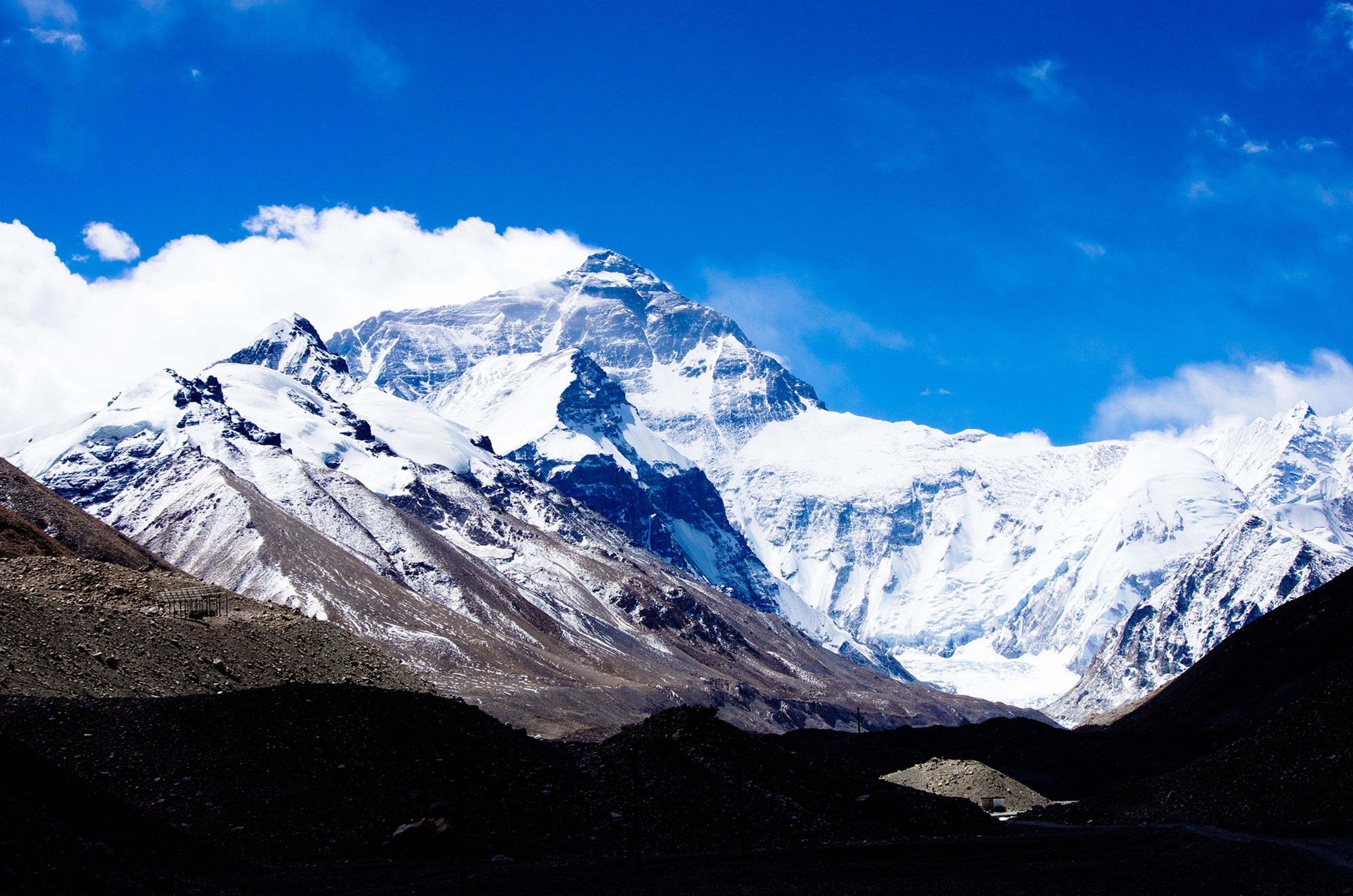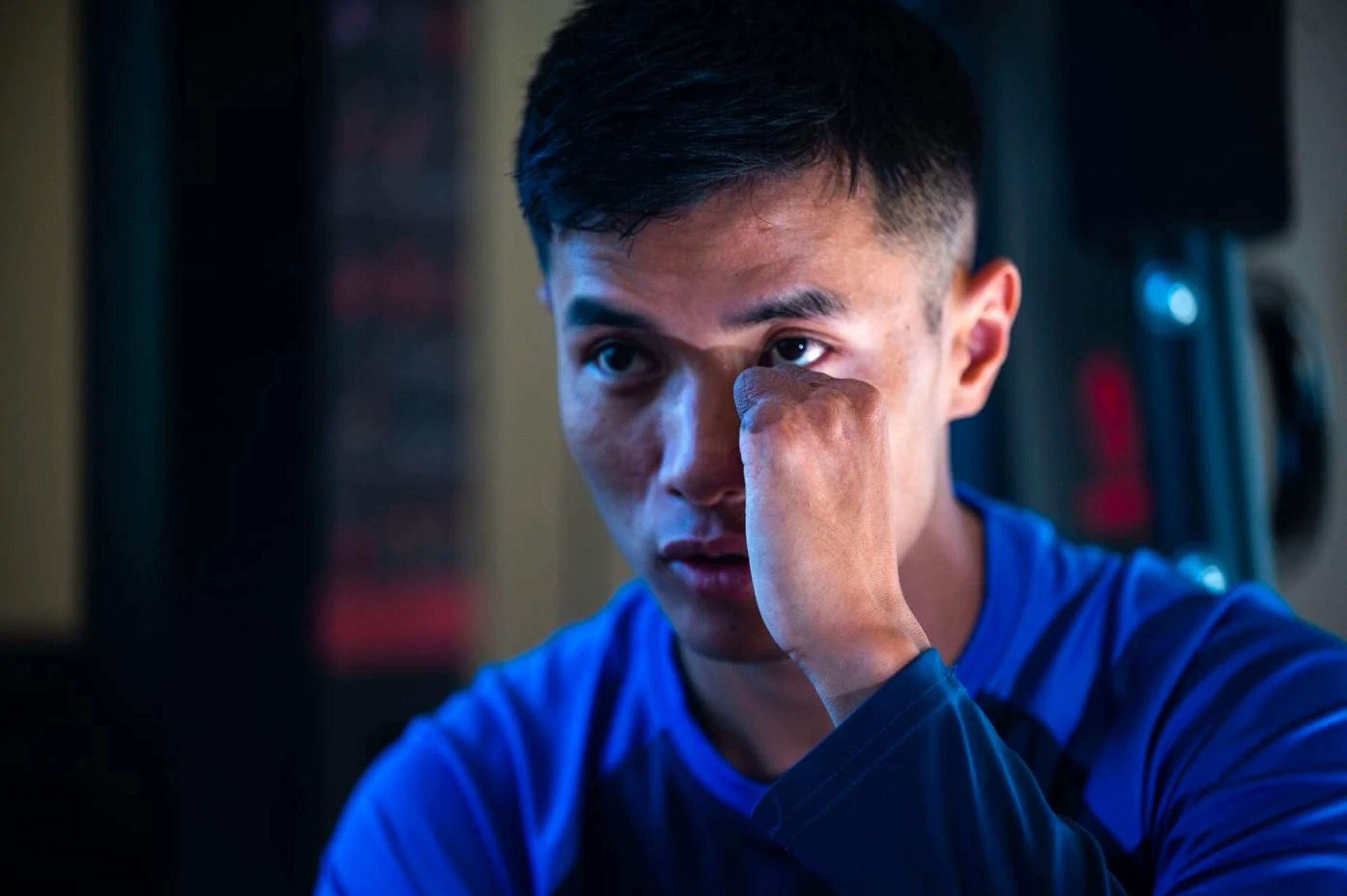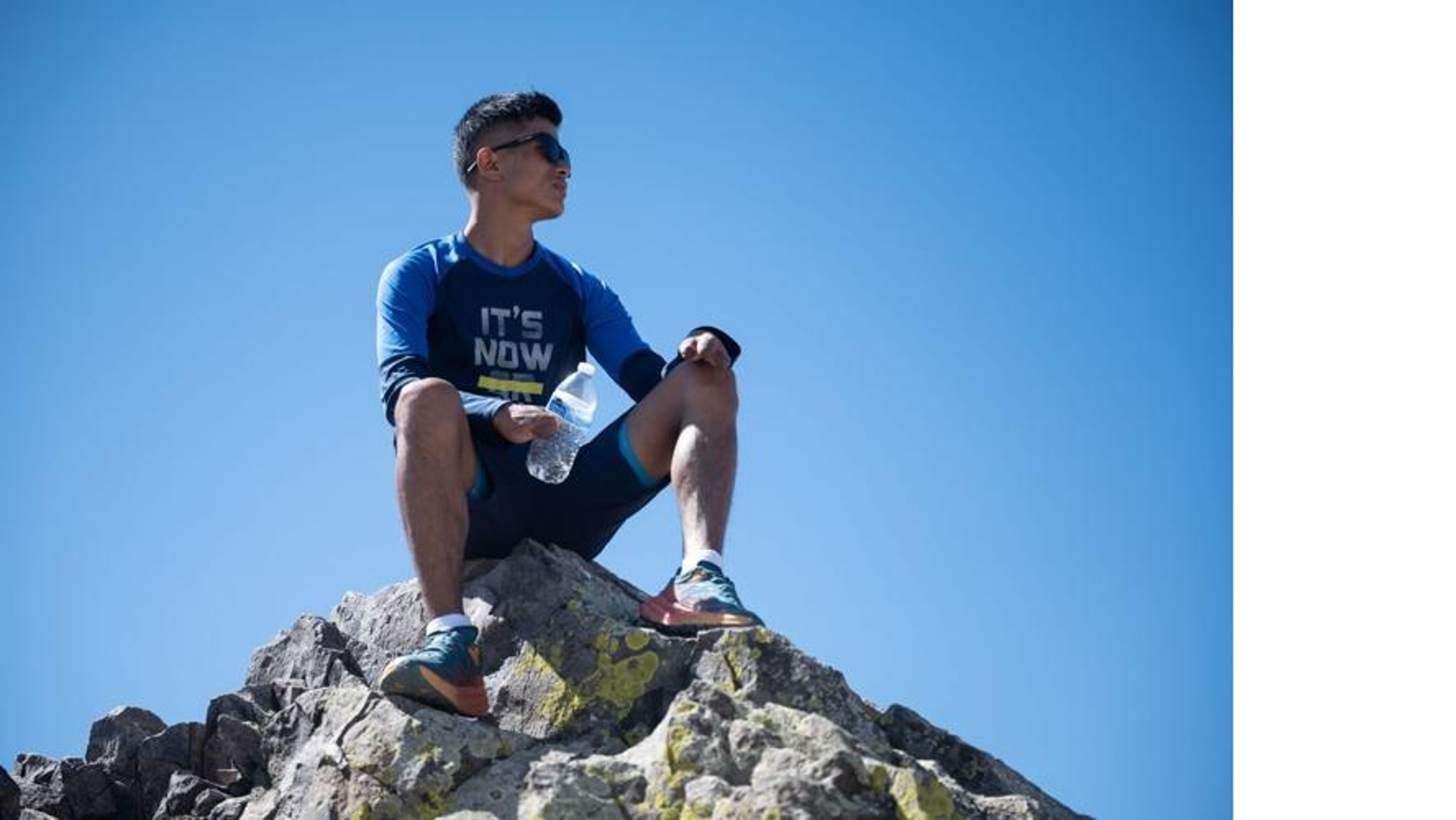From mountain tragedy to new life
Sherpa injured on Everest, now taking new direction
Mount Everest
GOLDEN, Colo. — He was once guiding in the Himalayas, once living his dream as a young Sherpa leading the way up Mount Everest, before a near-death tragedy that gained international attention. Years later, Dawa Sange Sherpa, 26, is trying to build a new life in Colorado.
It’s been a life of difficult adjustments, culturally and physically. Frostbite claimed his fingers that ill-fated day high in Everest’s “death zone.”
But one adjustment has been pleasant: Sange loves Colorado’s seasons.
“In the fall, the colors change, I take pictures; it’s beautiful,” he says here at his apartment in downtown Golden.
The mountains are most beautiful in the winter, he believes. No matter the harsh elements that keep others away, he is drawn to the mountains most in the winter.
“And when the spring comes, oh my god,” he remarks. “The flowers blooming, the green comes back. ... This is really such a beautiful state.”
Which explains why he’s decided to stick around since a miraculous, highly publicized series of events landed him here in 2017.
On Everest that summer, there were the darkest, bleakest moments when he thought he would die. The next season would be unimaginable in a much different way.
Inspired by his story from afar — reports claiming the highest rescue on Everest ever, involving possibly the youngest guide to ever reach Earth’s highest summit — strangers-turned-advocates transported Sange to Vail for medical treatment.
It was an effort sparked by Karsang Sherpa, the successful businessman in Denver who has advocated for his people from afar.
From afar, “he was a child — that’s what I saw,” Karsang recalls. “He was a child. He was innocent.”
Rather than have his blackened, frostbitten hands amputated, as was the thinking in Kathmandu, Sange would spend that fall in Vail adjusting to life with knobby, makeshift digits that were the result of complex, traumatic surgeries.
“Traumatic” would be the word of others aware of pieces of bone that were relocated and wrapped in skin from the abdomen and thigh. “Traumatic” would not be the word for Sange, as Cheryl Holman came to learn.
“He just never went into making this all bad, and thinking of himself as a victim. Never,” she says.
Among advocates who rallied there in Vail, Holman was struck by him “immediately,” she says. “Here was this kid, this young, handsome, bright kid, and cheerful in spite of everything.”
In spite of what had happened on Everest. Onlookers saw Sange’s story underscoring exploitation that lurks in the mountain’s commercialism.
At 18, with years of experience in the Himalayas but zero summit expeditions on Everest, Sange was picked to guide a lone client who proved ill-prepared — and whom Sange refused to leave behind amid near-fatal persistence. Reports credited the young Sherpa for saving the client whose stubbornness nearly cost them both more than their fingers.
Sange “would refer to this as ‘the Everest situation,’ ” Holman says, “but he never, never was angry, never resentful.”
Sange calls Holman “Mom,” for her support that began there in Vail and endures today, seven years later. By that first spring in Colorado, there was hope: Sange could envision a new life here.
“I never thought I’d come to America,” he says. “It was like magic.”
But life happens in seasons, always changing. Sometimes, the magic gives way to uncertainty.
Life in two worlds
While he continues physical therapy and lives half the year in Colorado on a medical visa, Sange has struggled for status granting him a legal right to work.
“I’d love to work,” he says. Until then, it can feel as if he’s only partially independent here at his Golden apartment, where he recently moved.
He’ll spend the days reading, improving his English. He likes to study and watch documentaries. He likes to explore the mountains, of course, and he always looks forward to his next volunteer opportunity.
Much of that has focused on adaptive athletes, including with Lockwood Foundation. As part of the nonprofit’s mission to get people with disabilities outdoors, Sange has played a lead role in getting wheelchair-bound people to the 14,000-foot summits of Mount Elbert and Pikes Peak.
“He gets to be who he’s always been, which is a world-class mountain guide,” says Jeffrey Lockwood, Lockwood Foundation’s founder.
“I also think there’s an element to him, a fire to him, in how he interacts with our adaptive community. It’s interesting to see him lean into this concept where we all have different abilities and experiences; I think that’s a place his heart is really connected to now. Just showing people that you can be a leader and be different.”
Perhaps he’s showing his home country.
“He’s kind of straddled between two worlds: this world in the U.S. and this world in Nepal,” Karsang Sherpa says. “Personally, I think he’s a lot more comfortable with his world in Nepal. But in Nepal, if you’re physically maimed, you’re looked upon as a second-class citizen in every way.”
Sange does not linger on the reality — “he’s always focused on the positive and what’s next,” Lockwood says — but it’s the reality keeping him from the life he knew, the life he dreamed about.
It was the dream of a poor boy who grew up in the high, remote countryside around Makalu, herding his father’s yaks.
“When Western people came to the mountains, I saw them, their very nice backpacks and clothing,” Sange says. “I felt like someday, I want to walk with them and guide them. That was the dream.”
He would pursue it at 14. He’d leave behind the farm, leave behind the deep sadness there. He had recently lost his mother to illness.
Sange was adept on his own at that point. He was strong, too, from that childhood spent herding and finding food and water for himself. This would serve him as a porter. He hauled his body’s weight around the Himalayas in the first jobs of a yearslong journey to Everest.
Several training courses and high-altitude tours and summits above 20,000 feet preceded his initial assignment on an Everest rescue team. At 18, he had no thought of being the youngest to guide a climb to the summit, as reports would later claim him to be.
From Denver, Karsang Sherpa read the reports and later learned from people he knew back on the ground.
“Sange had some training, but he should not have been sent on the mountain with that climber,” he says. “The more experienced guides were worried it was going to end in tragedy, so they refused to go.
“But what choice does Sange have? If he says no, he may never be given the opportunity again.”
Ill-fated mission
The client started slow, unusually slow by Sange’s recollection. The man remained slow up to Camp 2 and Camp 3. By then, Sange says he had repeatedly suggested turning around.
“He kept saying, ‘I’m going to the top, I paid a lot of money to your company and government,’ ” Sange says. “I told him, ‘Your life is more important than your money.’ ... He kept saying, ‘No, no, I have to go to the top.’ ”
Onward they went, slowly, Sange sacrificing his own oxygen supply along the perilous way. It seems to him a miracle they made it to the top — and a greater miracle they made it down.
Relentless snow and brutal winds met them on the descent. Sange remembers his client finally collapsing near The Balcony above 27,000 feet. “But he was still alive,” Sange says. “I could not leave him.”
Soon, he too drifted somewhere between life and death.
In his thirst, Sange remembers dreaming of an ocean to drink. He remembers a more vivid dream.
“A very beautiful dream,” he says. “I saw a lot of beautiful flowers; I’d never seen flowers like that. Then I saw beautiful girls, and they’re calling my name. ‘Sange, Sange! Come, come, let’s go!’ ”
He was about to take a step there in the field of flowers. He remembers carefully considering that step.
“I think, no, no, I’m not coming,” he says. “And suddenly I open my eyes, and when I open my eyes, I’m inside a tent.”
Moving with the seasons
Sensing life, a group of passing Sherpas had made the unlikely decision to haul down the frozen bodies.
What happened next is all a blur to Sange: the airlift to a Kathmandu hospital; word of his frostbitten hands needing to be amputated; the international spread of his story that sprung Karsang Sherpa to action; strangers and foundations coming together to raise more than $700,000 to get the young man and his destroyed hands to Vail for surgeries that would preserve some function.
When Karsang picked up Sange at the Denver airport, the boy appeared on the verge of death.
“But mentally and emotionally, he was very positive,” Karsang says. “I think one of the things that served him then and continues to serve him today is he’s just a super, super positive person.”
And grateful, says Sange’s Colorado “mom.” That’s how Holman knows him: “Grateful,” she says. “And curious.”
He’d be most grateful to gain a visa to work, to pursue the career he has in mind in America. “Similar to Lockwood Foundation,” he says — connecting people of all abilities to the outdoors, maybe even back in his homeland where the prospect is hard to fathom.
With a disability in Nepalese society, “you think you cannot do anything,” Sange says. “People in this country, they say you can do anything.”
Just look at him: He skis and rock climbs, and he’s tried golfing, stand-up paddleboarding and paragliding. He loves camping. He loves photographing fall colors and springtime blooms.
He moves through the seasons he loves, following his curiosity amid life’s uncertainties.
“It’s all about the next adventure; that’s what lights him up,” Lockwood says.
The adventure today is North Table Mountain, not far from Sange’s Golden apartment. It’s his first time at the modest mountain that seems not so modest to him, but rather immensely wondrous.
“Ooohhh, look at this,” he says, bending down to delicately rub a delicate, ornate plant growing between rocks.
Up ahead, he stops to read an educational sign about lichen, the multicolored algae and fungi coating the rocks. “Amazing,” he utters.
He continues up a promontory and sits at the top. He stops to feel the cool, late-summer breeze carrying autumn.
He looks across the grassy mountaintop and has a thought. “I bet coming here in the spring is very fun,” he says. “The grasses, the flowers ...”











